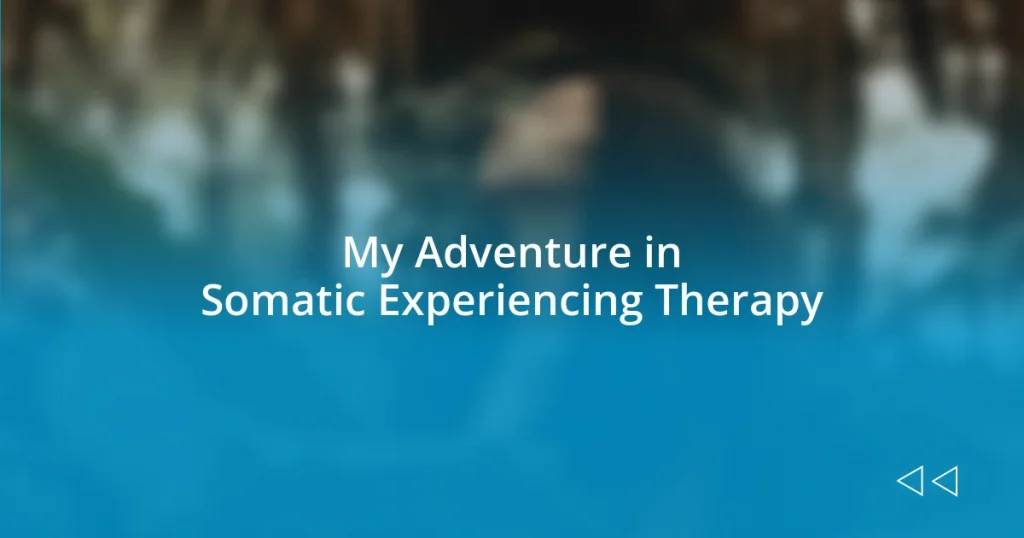Key takeaways:
- Somatic experiencing therapy focuses on reconnecting with bodily sensations to process trauma and stress, facilitating emotional understanding.
- Confronting buried emotions and learning to trust the healing process are significant challenges encountered during therapy.
- Patience is crucial in the healing journey, as progress is often gradual rather than immediate, emphasizing the importance of the journey itself.

Introduction to Somatic Experiencing Therapy
Somatic experiencing therapy is a body-centered approach designed to help individuals process trauma and stress. I remember the first time I experienced it; I was both curious and a bit skeptical. How could simply paying attention to my body possibly help with the emotional baggage I carried?
The method draws on the fact that trauma often resides in our bodies, manifesting as tension or discomfort. For me, discovering how my breath shifted when I felt anxious opened a new door to understanding my reactions. It’s fascinating to consider—have you ever noticed how your body responds before your mind even registers a feeling?
Through gentle awareness and tracking bodily sensations, somatic experiencing allows us to reconnect with ourselves and cultivate a sense of safety. I often felt that my emotions had a life of their own, but through this therapy, I learned to listen to them as if they were old friends trying to share their stories. What if tuning into those sensations could lead to greater clarity and peace?

Challenges Faced During the Process
Embarking on somatic experiencing therapy wasn’t all smooth sailing for me. One of the biggest challenges was confronting buried emotions I hadn’t realized I was holding onto. As I delved deeper into my sensations, I found myself unexpectedly overwhelmed by long-forgotten memories. Have you ever felt the urge to retreat when faced with something uncomfortable? I definitely experienced that urge, questioning if I was truly equipped to handle it.
Another hurdle was learning to trust the process. Initially, I struggled to accept that just being present in my body could instigate healing. I remember sitting in a session, wrestling with doubts while my therapist encouraged me to embrace the discomfort. I often wondered if I was simply wasting my time; after all, isn’t it human nature to seek immediate results? However, as I persevered, I started noticing subtle shifts in my perspective—like when you realize a puzzle piece finally fits into place.
Lastly, I encountered the difficulty of patience. Healing isn’t a sprint; it’s more of a marathon. I often caught myself wanting faster breakthroughs, yet what I learned is that progress can be gradual. Can we truly appreciate our journey when we’re fixated on the destination? In my case, those moments of stillness became as vital as the breakthroughs themselves, allowing me to cultivate a deeper appreciation for each step taken along the way.
















